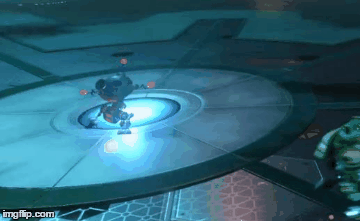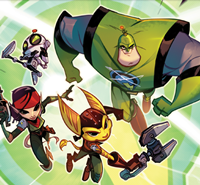In 2002 your life bar was marked by 4-8 nanotech sprites that would deplete one by one.
I found this appropriate. The sprites were the same as the ones you pick up from the crates, and so they were clearly representative of your health. They also looked really cool. Infact I really liked the PS2 nanotech far more than what we got on the PS3. And R&C1 with more than 8 health would be overpowering Ratchet. Because the whole deal was that all enemies hit one point of damage, and it took the right weapon to take them down. I felt R&C1 had the most stable enemy/health of them all, because it wasn't as dynamic as in later games (I'm speaking mainly of the difficulty tuning).
In 2002 there were no mini maps.
I never liked minimaps in Ratchet games. If you didn't know where you were going, the something is wrong with the level you are in. Minimaps are a thing most games should want to be rid of, because of the extreme case in Metal Gear.
In 2002 you had a number telling you how many missiles you had left.
All of the games had numbers for the ammo count. Unless you are talking about ship missions, in which case they actually had a visual count of your current missile count.
In 2002 health crates were little boxes of glass with Nanotech inside of them.
Which we all know and love..?
I see what you mean, in the each new game on the PS2 was trying to find a definitive formula with which to stick to, but I found each standalone game equally as good in their own ways. The first 3 R&C games are the most balanced games I have ever played.
OT: Nefarious' evil scheming is always great, but I guess in the end it is all about the character, so I went with that. Lawrence is great and all, but Nefarious is the real star of the show.







